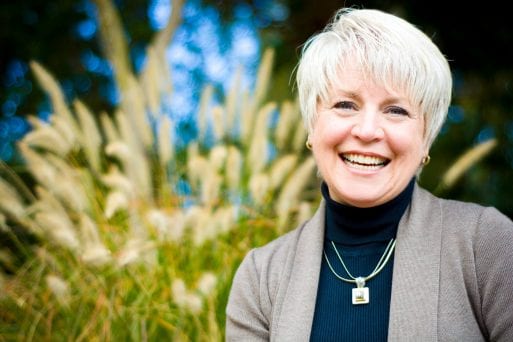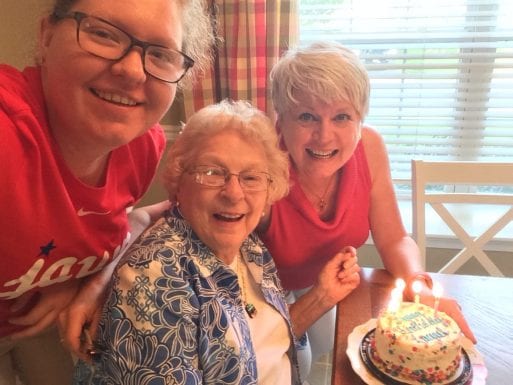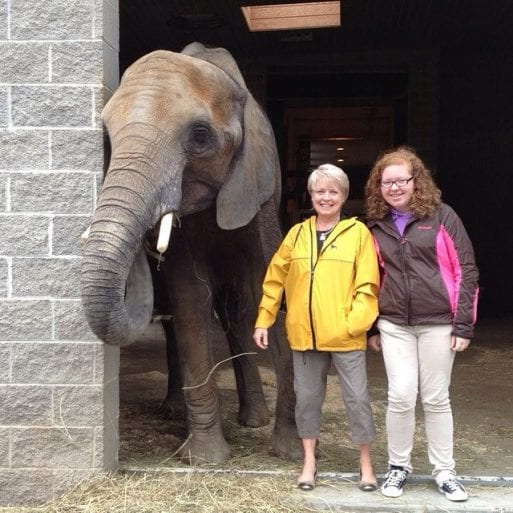 In this first installment of a two-part interview, SevenPonds speaks with Jill Kearney, founder and CEO of Senior Moves By Design in Allentown, Pennsylvania. Since founding the company in 2009, Jill has assisted more than 800 senior clients to make “joyful transitions.” She enjoys traveling, spending time with her two daughters, her mother and her dogs, and advocating for elephants. Jill, who’s serving her second term on the board of the National Association of Senior Move Managers (NASMM), is also writing her first book.
In this first installment of a two-part interview, SevenPonds speaks with Jill Kearney, founder and CEO of Senior Moves By Design in Allentown, Pennsylvania. Since founding the company in 2009, Jill has assisted more than 800 senior clients to make “joyful transitions.” She enjoys traveling, spending time with her two daughters, her mother and her dogs, and advocating for elephants. Jill, who’s serving her second term on the board of the National Association of Senior Move Managers (NASMM), is also writing her first book.
Editor’s note: This interview has been edited for length and clarity.
Rachel Jones: What inspired you to found Senior Moves By Design?
Jill Kearney: I was staging homes when the real estate market crashed in 2008. I was a single mom with two daughters, and it was a really bad time for a staging business. So I prayed about it, and one day I was speaking at a conference in Phoenix when a woman there encouraged me to work with seniors — she really dogged me. So finally, I had this moment with God where I said, “Listen, if I’m supposed to do this, you need to drive the ship.” I didn’t grow up with grandparents or many older people in my life, and I didn’t know where to start. So I said, “Here’s the deal, if it works I’ll give you the credit, and if it doesn’t work I’m coming after you.” And that day the phone rang, and we had our first client. Then it rang three more days in a row. Now, I have 23 people on my team, and I’m doing a lot of educational talks. So it’s kind of taken on its own life, and this girl who grew up without grandparents is finding that this niche is really special.
Rachel: You aim to provide people with a “joyful transition.” What does that mean?
Jill: I’ve moved seven times as an adult – every time, my mom was there to help me. We did it together, and we had fun. She’s nearly 91, and has been widowed about nine years; the last time was when we moved her up from Florida to be closer to me. When I thought about starting this business I thought, “Hey, moving is fun” – only to find that nobody else thinks that way. So I tried to break it down: What made our moves so joyful? Part of it is attitude. The second part is having clear processes that make it run smoothly. ( I used to work in corporate process management.) But what really makes the biggest difference is that we love our clients through the process. We provide the caring and attention to detail that helps the human being get through the process while we’re getting their stuff through the process.

Jill celebrating with her mother and daughter
Rachel: What percentage of your clients would you say are downsizing, and what are some of the challenges as well as the positive aspects?
Jill: I would say that 99.5 percent are downsizing. There are lots of studies showing that unloading volumes of stuff from our lives makes it more joyful. People use the words “downsizing” and “decluttering” interchangeably, but to me, there’s a difference. You declutter when you have items that are still useful, but there are more of them than necessary. With downsizing, you have more space than you need or things that aren’t being used. Maybe you have a house with four bedrooms but you only need one. Maybe everyone uses the family room, but you have a formal living room — I like to call it the museum living room. If you take all the places in your current home that you actually use and lop off the other ones, that’s downsizing.
People always ask, “What can I keep?” Their second question is, “What do I do with everything that’s left over?” That tends to be the single biggest issue. It’s not that they love everything that’s in their house, but they don’t want it to go into a dumpster. And so they freeze up, do nothing, and stay in a house that doesn’t work.
Rachel: When you’re working with people to downsize, how do you help them decide what to keep and what to let go?
Jill: I coach people to find their favorites. Nobody, not even people high on a hoarding scale, loves everything that’s in their house. And so I talk to them about identifying those things that provide joy or have an important memory or function. That’s a very fast way of taking a 3,000-square-foot house and figuring out what will fit in a 1,000-square-foot house.
Then we look at space planning. Some folks know exactly where they’re going, so we do large-scale floor plans. That takes 80 percent of the pressure off because they can visualize where things will go. Our company has liquidation managers who can come in and determine what might be appropriate for auction, or what should be donated. That leaves us free to talk about the smaller items and pack them up. We bring in the movers, and then we unpack and set everything up in one day – meaning that beds are made, TVs and computers are working, and artwork is hung on the walls.

Jill and her daughter pose with a teenage elephant at the Pittsburgh Zoo
Rachel: Are friends and family members ever involved in senior moves? Is there ever a difference between what your client wants and what family members want?
Jill: We do a lot of unofficial marriage and family counseling during senior moves. I always assume that if a family member is being difficult, it’s not because they’re trying to be. We’ll often ask them, “What part would you like to do?” And sometimes they’ll say, “I don’t want any part in this,” and we’ll suggest that they come at the end of the move day. Sometimes kids have said forever that mom’s stuff is junk – “I’m so glad you’re getting rid of this junk.” So we’ll coach them to acknowledge that some things are treasures. We’re highly efficient but very kind, and it calms everybody down. There have been times when they’re stepping on every last nerve that I have, and I’ve had to walk out the front door and take some deep breaths. But in the end, what we’re doing is not brain surgery — nobody’s going to die if we make a mistake. And people come up to us afterward and say, “Wow, we couldn’t have done this without you.” That’s what gets our team coming back – it’s just wonderful when you’ve really touched someone that way.
Be sure to check back next week for Part Two of our interview with Jill Kearney.

 How Can Senior Move Managers Assist in Later-Life Transitions?
How Can Senior Move Managers Assist in Later-Life Transitions?


 Our Annual Seven Holiday Gifts for Someone Who Is Grieving, 2024 Edition
Our Annual Seven Holiday Gifts for Someone Who Is Grieving, 2024 Edition
 “The Funeral” by Matt James
“The Funeral” by Matt James
 Ten Humorous Quotes About Death For the Holidays
Ten Humorous Quotes About Death For the Holidays 














